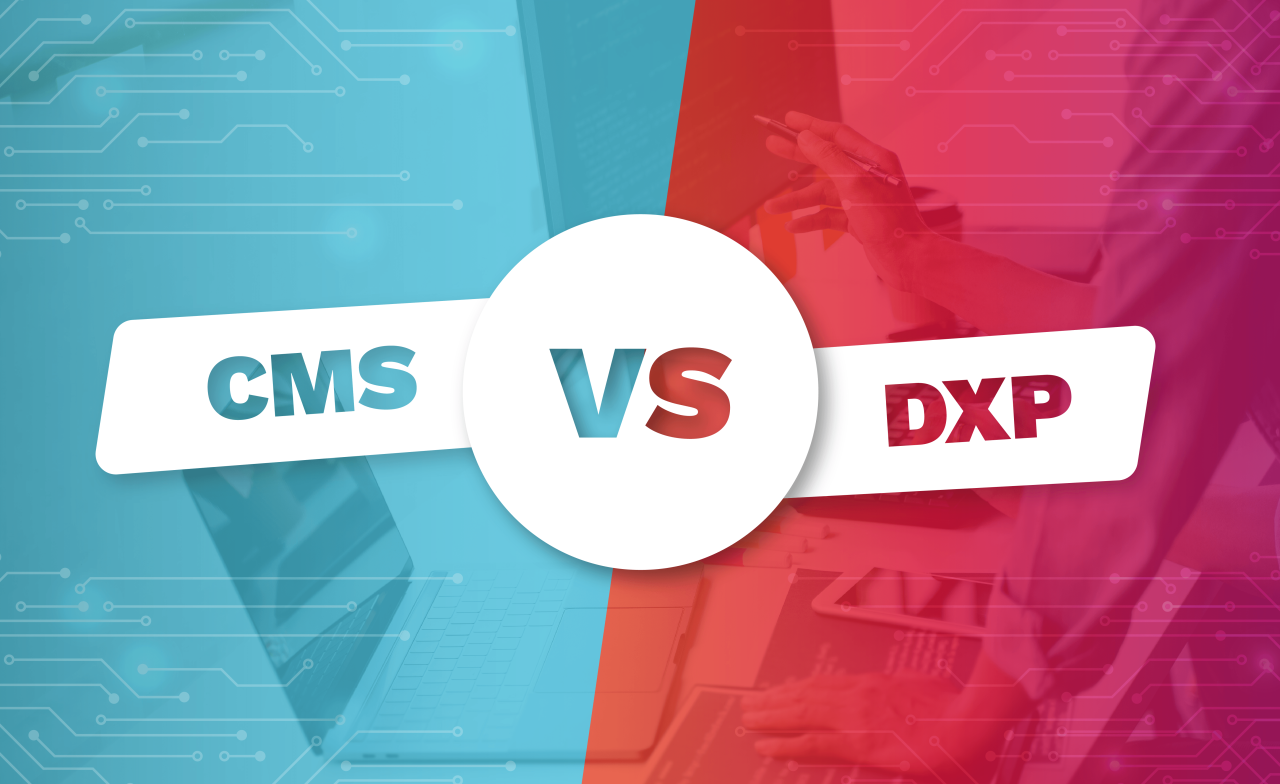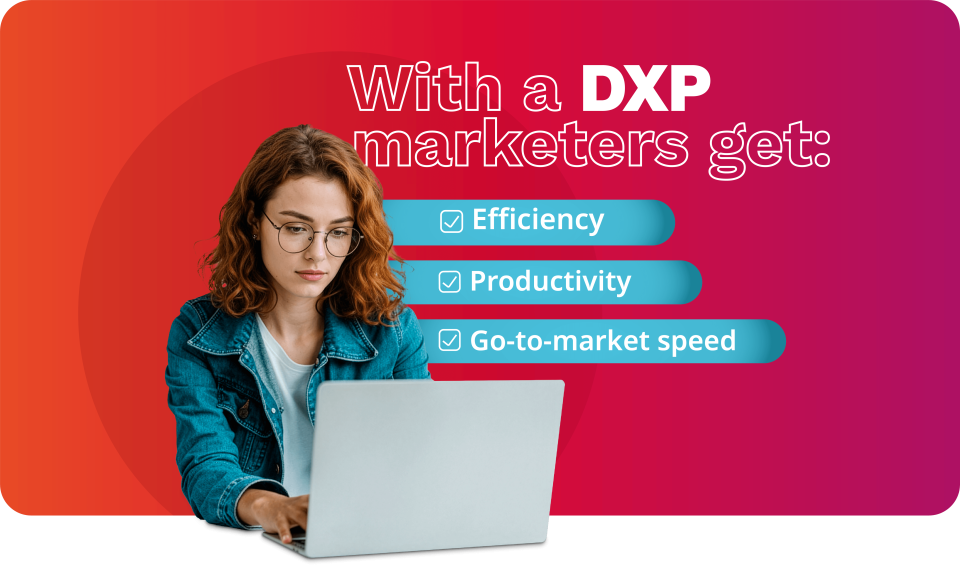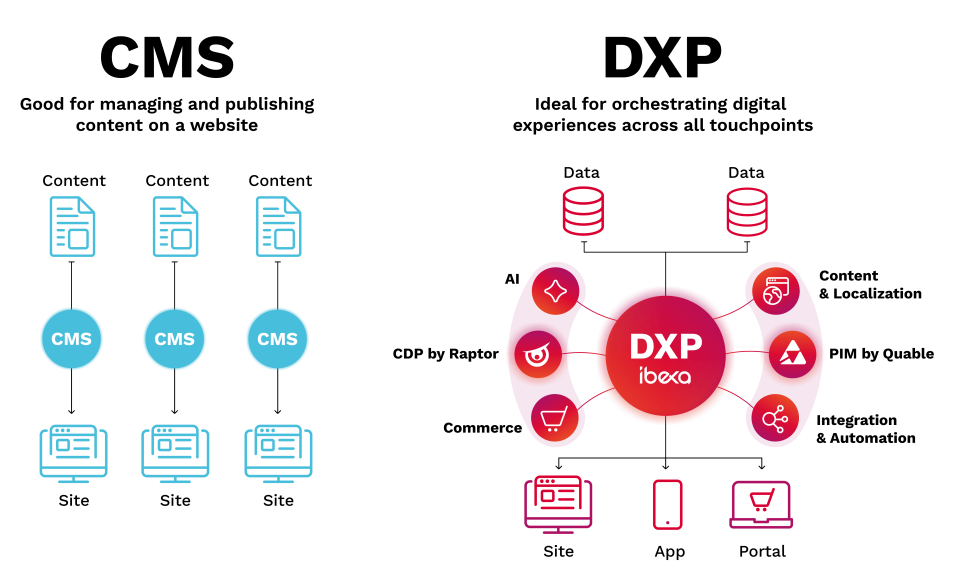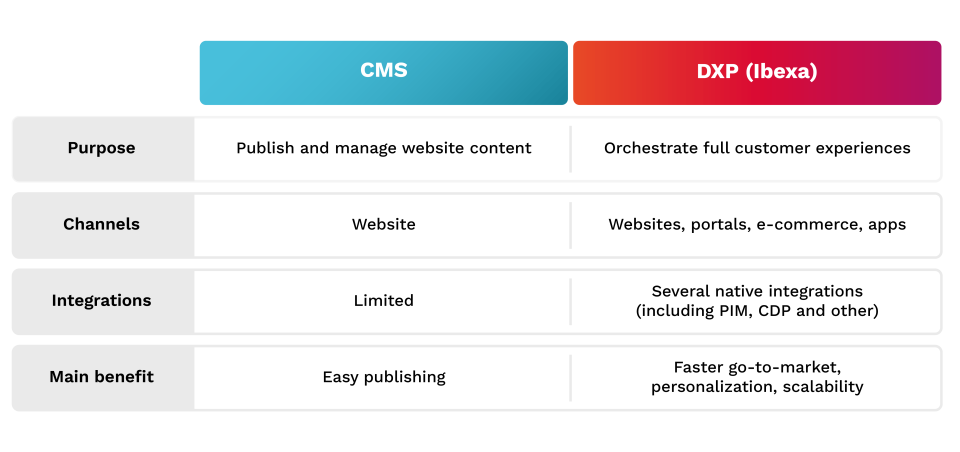What is a DXP, and how is it different from a CMS?
Learn about the key differences between the two platforms - and how to choose which is right for you.

If you’re working in digital marketing or IT, you’re probably using some kind of CMS (Content Management System). WordPress, Drupal, Sitecore - those platforms let you create and publish content online. Pretty straight forward and enough for some.
But then there’s this newer acronym floating around: DXP (Digital Experience Platform). Is it just a fancier name for CMS, or something entirely different?
Let’s break it down.
What is a CMS (Content Management System)?
A CMS (Content Management System) is software that helps you create, manage, and publish on a website. At the core, they’re publishing tools, made to make it easy for you to quickly publish content that looks good when people visit your site.
For some marketers, that might be all that’s needed.
But if you want to take control of the entire digital experience on your site, like personalizing content, activating customer data, connecting to PIM system, and entering new markets while keeping branding consistent – well, then a CMS just won’t cut it.
With a CMS alone, marketers quickly end up juggling multiple tools, battling with integration, and losing valuable time as a result.
What is a DXP (Digital Experience Platform) and what does it do?
A DXP takes things several steps further. Instead of being “just” about publishing content, it’s about orchestrating the entire online experience.
With a DXP (like Ibexa), you’re shaping how each customer interacts with your business across the entire digital journey.
- Personalization: Content shouldn’t be static. A DXP can come with personalization features, allowing you to target specific segments based on audiences. This means that each visitor will see individual, personalized content on the site, and you can also target them with streamlined content in other channels through a CDP (Customer Data Platform).
- Cohesive marketing platform: By definition, a DXP can use data from other key marketing tools, such as PIM, CDP, marketing automation platforms, gamification systems, and others. This way, data flows freely between all systems while saving resources on complex integrations.
- Faster Go-to-Market: Instead of managing one website, a DXP supports multiple sites, languages, and brands, all in one place. This makes a DXP ideal for multi-market brands who want to easily manage and expand their digital experience beyond markets.
In short, a DXP covers the “experience layer” that goes beyond content, helping businesses orchestrate the full customer lifecycle online.
What’s the main advantage of a DXP for marketers?
Here’s where the difference really matters for marketing teams.
The main advantage of a DXP for marketers is faster go-to-market. Unlike a CMS, which only publishes content, a DXP lets marketing teams build, personalize, and scale campaigns at a fraction of the time it would using fragmented systems.
With a DXP, marketers get:
- Efficiency: Marketers can focus on just one platform to handle content, personalization, product information, and campaign orchestration. Instead of switching between five different tools, all data and content can be easily transferred and repurposed between different campaigns and markets.
- Productivity: Marketers can build, test, and launch experiences without relying heavily on developers. Create brand consistent page setups, insert modular content, and reuse components to make the process faster.
- Go-to-market speed: Creating a consistent digital experience across markets can be extremely complicated and time-consuming. A DXP is built for this complexity, allowing teams to quickly build new sites and content – all while staying true to brand identity and localization.
This means marketing teams can focus on strategy and creativity, while automation and thoughtfully used AI take over the heavy lifting.
What kind of DXP is Ibexa?
Let’s take a deeper dive into Ibexa, one of the leading, Europe-based DXPs.
While this particular platform’s sweet spot is helping B2B companies manage long buying cycles, complex catalogs, and multi-market setups, it’s equally suited for B2C brands that need to scale personalized experiences and commerce across regions.
Here’s how Ibexa’s offering stands out:
Content management at the core with Ibexa DXP
Ibexa comes with robust content management capabilities: building pages, managing multilingual websites, launching campaigns, and keeping branding consistent across multiple markets. This provides the foundation for both B2B and B2C companies to build cohesive digital experiences.
With Ibexa Connect, the built-in automation platform, marketers can automate a large chunk of their tasks. The DXP connects to about 800 popular tools and apps including Airtable, Gmail, Mailchimp, Trello, Webhooks, HTTP and many others. For example, marketers can create an automation which creates a post every time new content gets published.
And within Ibexa’s AI Catalyst, OpenAI’s tools are available by default (with the option to connect to whichever LLM you prefer). This allows marketers to create, translate, and repurpose content much faster.
Personalization with Raptor CDP
Personalization is no longer optional. Raptor CDP is now included in all Ibexa packages, from Headless through to Commerce. This makes it possible to activate customer data directly in your digital channels:
- Build audiences based on behavior, preferences, or buying intent.
- Deliver personalized content or product recommendations directly on your site.
- Activate dynamic audiences in campaigns across e-mail, paid, and other channels.
For example, you can build a certain persona (like a specific industry role, buying pattern, or lifetime value) and automatically display certain content to this audience. You can also target this same audience across your other channels to create a truly personal and consistent experience.
Take a look at 6 ways to create personalized experiences in B2B.
Product information management with Quable PIM
Whether you’re a B2B manufacturer with complex product data or a B2C retailer with fast-changing catalogs, Quable PIM ensures that product content is always accurate, enriched, and ready for distribution.
Benefits include:
- Faster time-to-market for new products and collections.
- Consistent product data across every touchpoint.
- Reduced manual work and errors in catalog management.
PIM and AI: A New Era for Product Information.
Commerce
If e-commerce is a part of your business model, Ibexa Commerce offers everything you need to get an e-shop going.
- Attractive storefront starter kits
- Quick order for customer convenience
- Real-time cart management
- Various payment and shipping methods
- Real-time visibility of stock inventory levels
- Catalog management
- Personalized recommendations
- Management of discounts (introduced in Ibexa DXP v5)
Everything is completely customizable, allowing you to define your workflow or add whichever steps you prefer. And with AI-powered personalization and search functionalities, each user is met with tailored recommendations based on their specific behavior. This way, you get an e-shop that works for you.
Scalable and modular architecture
Ibexa is built to grow with your business. You can start with the DXP functionalities and expand into personalization, PIM, or commerce when the time is right. For companies active in multiple markets, Ibexa’s modular approach means you can scale quickly while staying true to your brand identity.
In short...
- A CMS helps you publish content online.
- A DXP like Ibexa helps you create connected, personalized, and scalable digital experiences across the entire customer journey.
FAQ
- What is the difference between a CMS and a DXP?
A CMS (Content Management System) is mainly used to create, manage, and publish website content. A DXP (Digital Experience Platform) goes further by connecting content with customer data, personalization, commerce, and integrations across multiple channels. - Is Ibexa a CMS or a DXP?
Ibexa is a Digital Experience Platform (DXP). It includes CMS functionalities but also offers personalization, commerce and multi-site management. - Do I still need a CMS if I have a DXP?
No. A DXP includes CMS features, so you can manage content and build websites. The difference is that with a DXP you also get personalization, integrations, and scalability across markets. - Why should marketers use a DXP instead of a CMS?
Marketers choose a DXP for complex, multi-market needs. With a DXP, you can manage campaigns, personalize experiences, and scale to new markets without relying heavily on multiple disconnected tools. - What makes Ibexa different from other DXPs?
Ibexa is modular and designed for both B2B and B2C companies. With the addition of Raptor CDP and Quable PIM to the family, Ibexa can provide a solution to the challenge of managing complex product information and leveraging customer behavioral data for enhanced personalized experiences across multiple marketing channels. - How does a DXP improve go-to-market speed?
Marketing teams can quickly launch new websites, apps, or campaigns while repurposing content, templates, and product data. This makes entering new markets or rolling out new products much faster compared to a traditional CMS setup.



